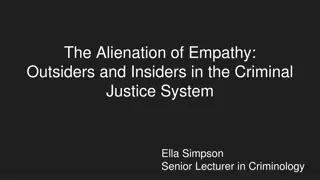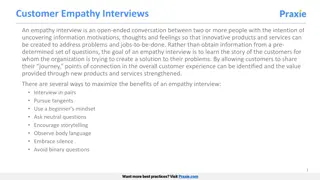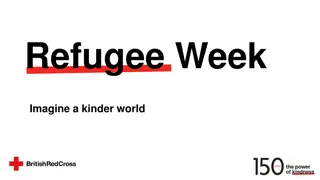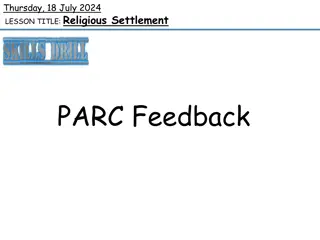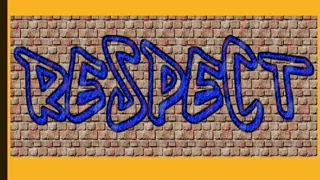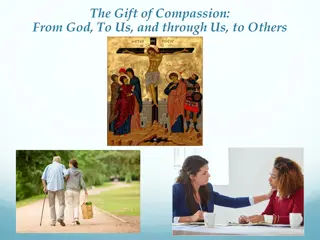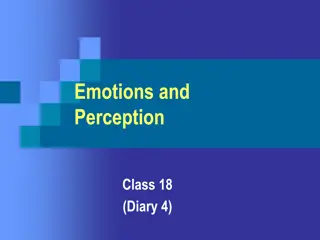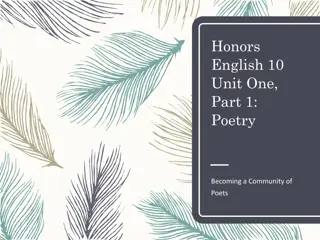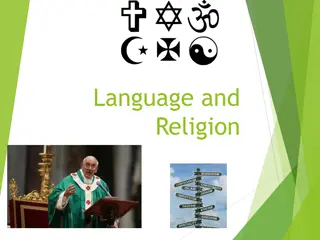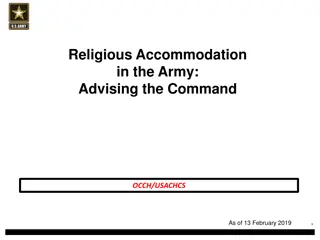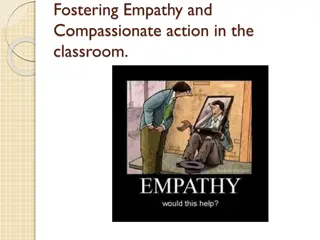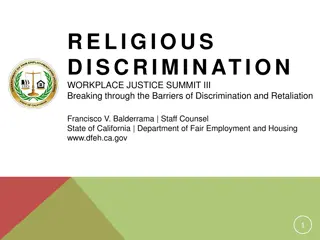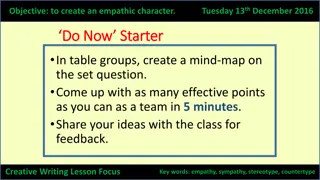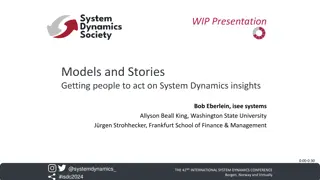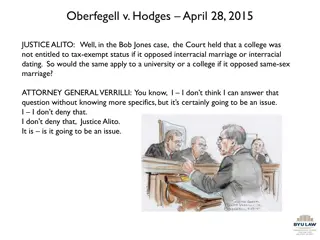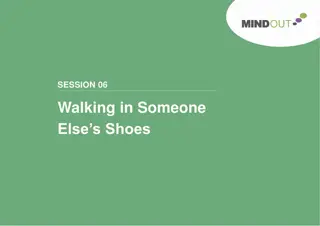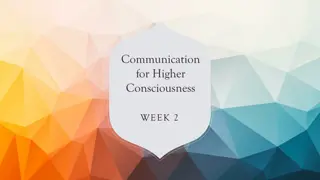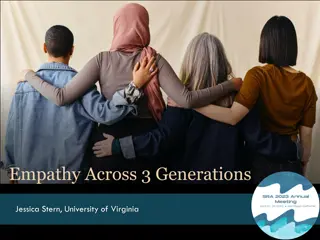Exploring the Significance of Religious Education in Cultivating Understanding and Empathy
This content delves into how religious education prompts challenging questions about life's meaning, fosters personal reflection, and encourages empathy and respect for diverse beliefs. It aims to help children explore different religions, develop a sense of identity, and understand the impact of religious diversity on society.
Download Presentation

Please find below an Image/Link to download the presentation.
The content on the website is provided AS IS for your information and personal use only. It may not be sold, licensed, or shared on other websites without obtaining consent from the author. Download presentation by click this link. If you encounter any issues during the download, it is possible that the publisher has removed the file from their server.
E N D
Presentation Transcript
Why? What? How?
It provokes challenging questions about the meaning and purpose of life, beliefs, the self, issues of right and wrong, and what it means to be human. It develops pupils knowledge and understanding of Christianity, other principal religions, and religious traditions that examine these questions, fostering personal reflection and spiritual development It encourages pupils to explore their own beliefs (whether they are religious or nonreligious), in the light of what they learn It enables pupils to build their sense of identity and belonging, which helps them flourish within their communities and as citizens in a diverse society It teaches pupils to develop respect for others, including people with different faiths and beliefs, and helps to challenge prejudice It prompts pupils to consider their responsibilities to themselves and to others, and to explore how they might contribute to their communities and to wider society. It encourages empathy, generosity and compassion.
Learning about Learning from
Make learning about religions accessible and meaningful by linking it with children s own experience Enable children to become aware that people in this country and across the world adhere to many different religions, each with their own beliefs, practices, special stories, places of worship, holy men and women, and festivals
Enable children to learn about different beliefs about God and the world around them Help children to respond to the big questions about life Enable children to understand the impact of religion on individuals and society locally, nationally and globally Enable children to make connections between religions
Aid them in developing empathy for different believers Help them to recognise the challenges involved in distinguishing between ideas of right and wrong, and valuing what is good and true
Local syllabuses must not be designed to urge religious belief on pupils It is important not to present religious beliefs as statements of fact. For example, rather than saying, God made the world , we need to say Christians (or Jews or Muslims or ) believe that God made the world .
Check pronunciation Stay aware of your own feelings and beliefs. Remember you are a role model. Learn from the children and parents and your local community Watch out for misconceptions Don t role-play worship or use actual sacred texts in role-play Don t represent the Jewish concept of God, Allah, Muhammad or a Sikh guru in any human form
https://schools.essex.gov.uk/ other/Essex_SACRE
Find the six religions of the Essex syllabus. Draw a rectangle round them Find six places of worship. Highlight them in the same colour and connect them to each religion. Find six writings. Highlight them in the same colour and connect them to each religion. Find some festivals. Highlight them in the same colour and connect them to each religion. You should have six key beliefs left. Connect them to each religion
Religions Religions Example belief The Noble Eightfold Path The Trinity The Trimurti The Five Pillars The Covenant The ten Gurus Example belief Writings Writings Place of worship Temple Place of worship Example f festival Wesak Example estival Buddhism The Suttas Christianity Hinduism Islam The Bible The Vedas The Qu ran Church Mandir Mosque Easter Divali Id-ul-Fitr Judaism The Torah Synagogue Rosh Hashanah Divali Sikhism The Guru Granth Sahib Gurdwara
Content integrated into ELGs with the following entitlements Activities based on first-hand experience Opportunities for play and learning that acknowledge children s particular religious and non-religious beliefs and cultural backgrounds Activities that help children to become aware of, explore and question issues of difference in religion and culture Activities that promote emotional, moral, spiritual and social development alongside intellectual development Positive images that challenge children s thinking and help them to embrace differences in religion and culture.
Special people Special places Special words and stories Special things in nature Special symbols and objects Special ways of living
The importance of Jesus The start of Jesus ministry Jesus teachings The events of Holy Week The Bible Church buildings Christian rites of passage Variety in Christianity
The Buddhas life story: his quest to find an answer to the problem of suffering The Middle Way The Noble Eightfold Path Enlightenment and Nirvana/Nibbana The Buddha image Buddhist shrines Buddhist devotional practices, including meditation
The concept of Brahman The Trimurti: Brahma (creator), Vishnu (preserver) and Shiva (destroyer) Reincarnation and the concepts of moksha (release from the cycle of reincarnation), dharma (duty to God and to others) and karma (the idea that actions have consequences for one s future rebirth) Other Hindu gods and goddesses: stories and festivals associated with them Hindu creation stories The AUM/OM symbol Features of the mandir Congregational puja (public worship in the mandir) The home shrine and puja in the home
The meaning of humanism Key humanist beliefs and ideas People are what matter in life The Golden Rule: treat others as you would like them to treat you You can live life without religion Science provides the most reliable source of knowledge about the world Humanist ceremonies marking key milestones in life The British Humanist Association and the Happy Human symbol
The part played by the city of Makkah and the Ka aba in the life of the Prophet Muhammad The revelation of the Qur an to the Prophet Muhammad The content of the Qur an: it contains many people and stories found in the Bible The fact that Jesus (Isa) is a revered prophet in Islam The Five Pillars of Islam Features of the mosque What happens inside the mosque, including prayer
The story of Moses and the exodus from Egypt The festival of Pesach and the Seder meal The story of how Moses received the Ten Commandments and the importance of these for Jews The importance of the home in Jewish life: keeping a Kosher home and observing dietary laws The Shema and the Mezuzah Observing shabbat in the home and the synagogue Features of the synagogue The Sefer Torah What happens inside the synagogue
Guru Nanak, the founder of Sikhism Guru Gobind Singh and the formation of the Khalsa The Five Ks and the turban The Mool Mantra The importance of equality in Sikhism Features of the gurdwara (temple) The Guru Granth Sahib (holy book) What happens inside the gurdwara
The self and being human Relationships and the community The natural world Right and wrong Big questions
The Buddha Living as a Buddhist Introducing Jesus The teaching of Jesus The last week of Jesus life The Bible Churches and what happens inside them
Brahman, the Trimurti and creation stories Hindu gods and goddesses Living as a Hindu Humanism Holy places in Islam The Qur an The five pillars of faith
Moses The Jewish home The Synagogue The first and last human gurus, the Khalsa and the 5 Ks The Guru Granth Sahib and the Gurdwara
You must research and present the key elements of your religion Success criteria Your audience must leave with the key information You must keep their attention You must suggest what we can learn from this religion
Engage Evaluate Enquire Express
Engage Connecting the LO with the childs experience or a hook . Enquire The lesson content and helping the children to engage more deeply through the asking and answering of questions Express Children make their own response to the content Evaluate The children evaluate what they have learnt and raise further questions
To know To understand To reflect upon Finding the underlying purpose
To understand the importance to Christians of being thankful What does thankful mean? How important is it to say thank you? Are there times when it is better not to say thank you? How much do you care whether someone says thank you to you or not?
Luke 17:11 Luke 17:11- -19 19 Jesus Heals Ten Men With Leprosy 11Now on his way to Jerusalem, Jesus travelled along the border between Samaria and Galilee.12 village, ten men who had leprosy[a]met him. They stood at a distance13 pity on us! 14 priests. And as they went, they were cleansed. 15 praising God in a loud voice.16 and thanked him and he was a Samaritan. 17 nine?18 foreigner? 19 made you well. Jesus Heals Ten Men With Leprosy 11 12As he was going into a 13and called out in a loud voice, Jesus, Master, have 14When he saw them, he said, Go, show yourselves to the 15One of them, when he saw he was healed, came back, 16He threw himself at Jesus feet 17Jesus asked, Were not all ten cleansed? Where are the other 18Has no one returned to give praise to God except this 19Then he said to him, Rise and go; your faith has
In a small group Make yourself a thought bubble Act a short play with the thought bubble where someone is thankful Act the play again when the same person is not thankful
Why did the man say thank you? Why did the others not? What would you have done? Why do you think Jesus said Your faith has made you well ? What difference does it make to Christians to say thank you Do other people of other religions/ world views say thank-you ? What other ways can you show that you are thankful? What effect does being thankful have on you and others?
Unpack the beliefs Which central meaning of the story do you want to explore? How can you present it and relate it to children s experience? How can you ensure the child understands and remembers?
Drama Sorting Writing Drawing Labelling Making a diagram Text restructuring Sequencing Multimedia
Handle them reverently Link them to visits, visitors, videos and photographs to bring them to life Link them to children s own experiences and what they know already Question the object Compare different versions of the same object
Whats the same? What s different?
You need to link the physical, aesthetic and human characteristics with the spiritual and emotional Visit when you can or use virtual visits Focus on each element and consider Why is it there? Why is it like that? How is it used? Help them understand that places of worship for one religion can look very different from each other
Design places of worship Jigsaw Create a virtual tour Make a glossary Label a diagram Make a Dorling Kindersley page Create a webpage Create an audioguide Use odd-one-out
Beware of giving the impression that religions are just one festival after another Teach deeply to ensure links are made to beliefs and teachings Help them to understand what it is like to be part of a faith community And why we celebrate and hold ceremonies Link to sacred objects Study the stories behind the festivals first
Write a letter or blog Use video to share what a festival looks like Write a list poem Create a festival box Create a radio documentary
Take something you learnt this morning Write an appropriate learning objective Plan the perfect lesson to share with the group

 undefined
undefined









